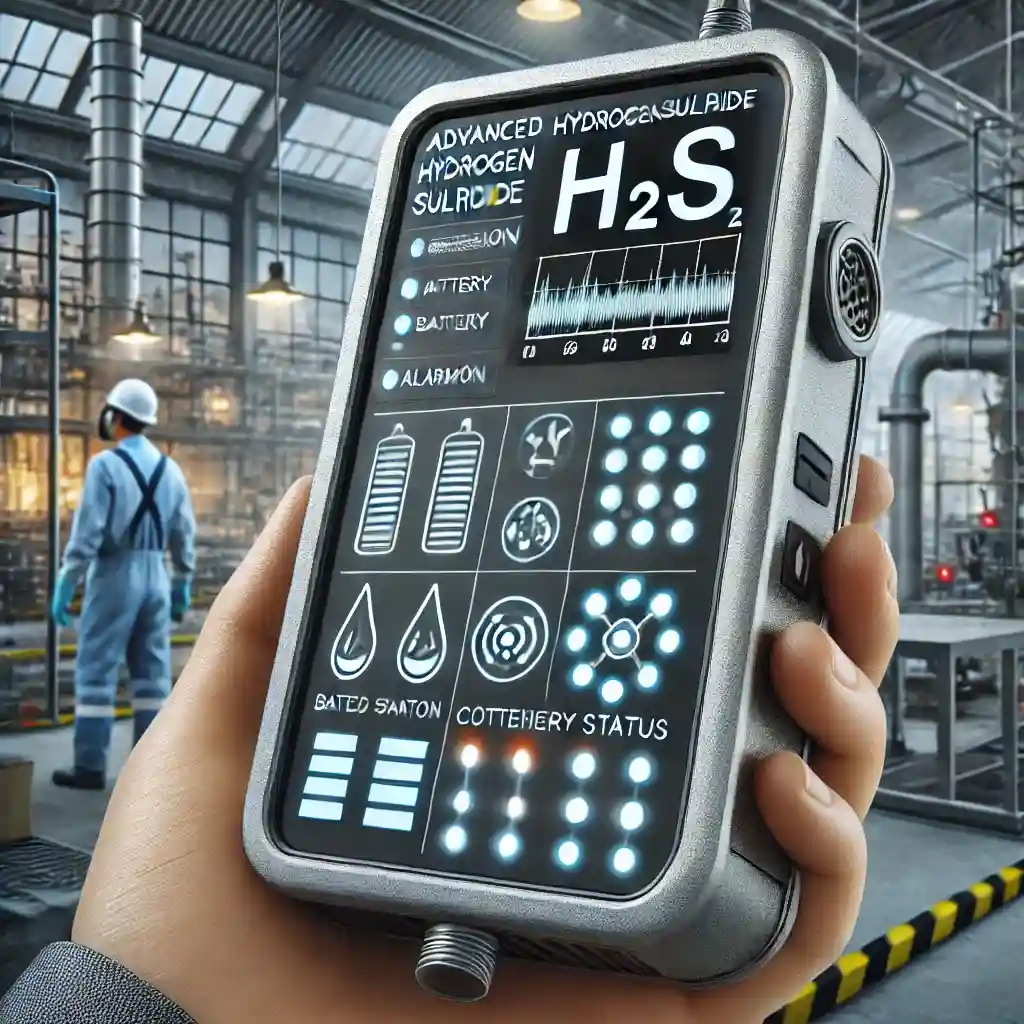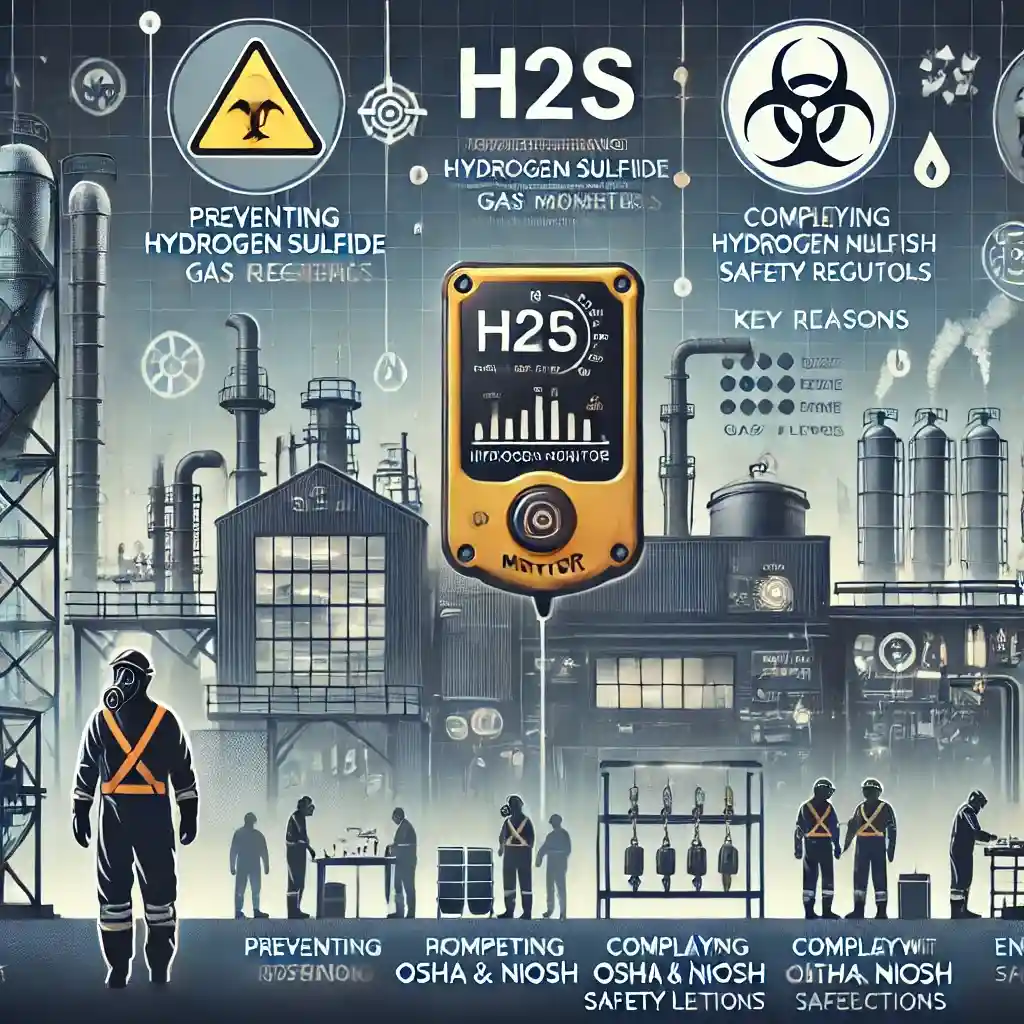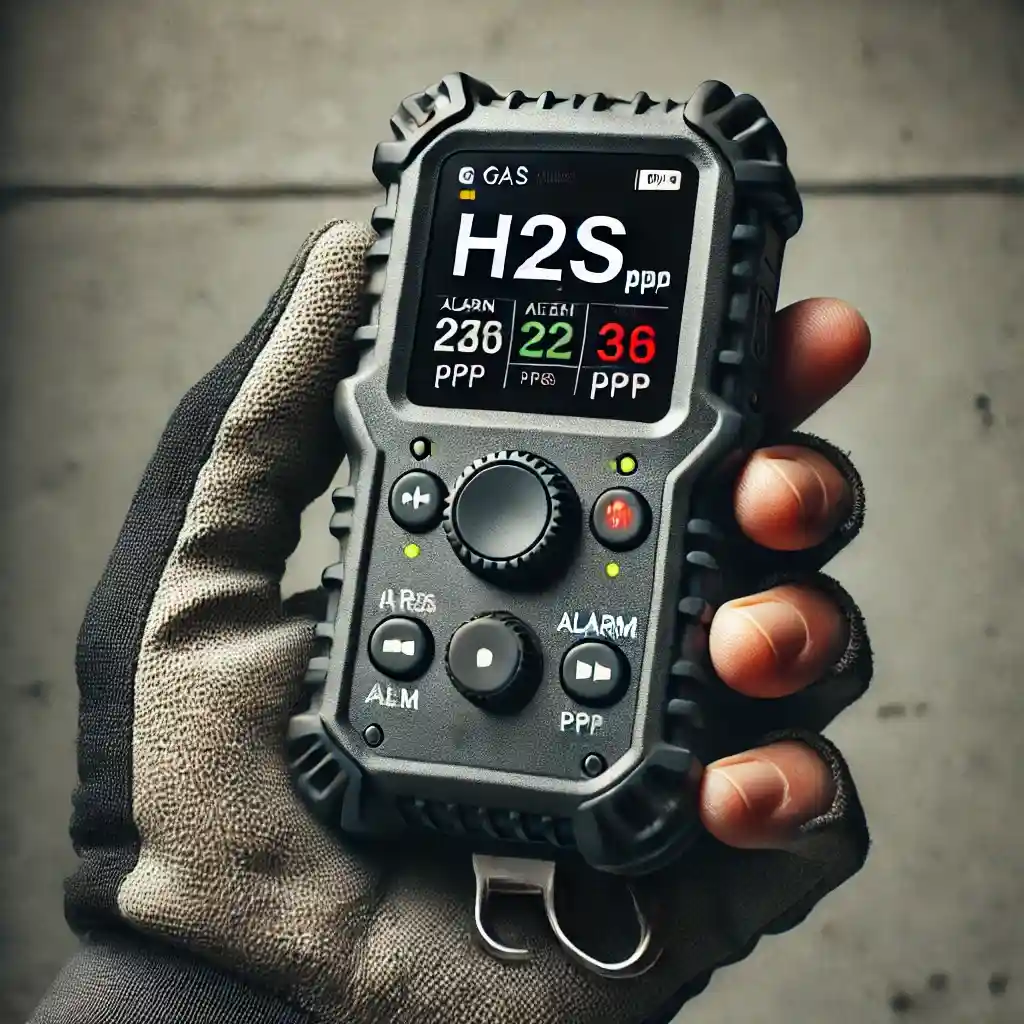Introduction
Hydrogen sulfide (H₂S) is a highly toxic and flammable gas commonly found in industries such as oil and gas, wastewater treatment, mining, and chemical manufacturing. Due to its colorless nature and characteristic “rotten egg” smell, early detection is crucial to prevent poisoning, explosions, and fatalities.
This is where H₂S monitors play a vital role. These devices continuously detect and measure the presence of hydrogen sulfide in the air, providing real-time alerts to ensure workplace safety. In this guide, we will explore how H₂S monitors work, their key features, and why they are essential for various industries.
How H₂S Monitors Work
H₂S monitors operate using advanced sensor technologies that detect and measure hydrogen sulfide concentrations in the surrounding environment. The key components and working principles include:

Sensor Technology
H₂S monitors primarily use electrochemical sensors, which function as follows:
- The sensor contains an electrolyte solution and two electrodes.
- When hydrogen sulfide gas comes into contact with the sensor, a chemical reaction occurs, generating an electrical current.
- The strength of the current is proportional to the H₂S concentration in the air, allowing the device to measure the gas level accurately.
Other sensor types, such as infrared (IR) sensors and metal oxide semiconductor sensors, are used in specialized applications for enhanced accuracy and long-term stability.
Real-Time Gas Detection & Alerts
H₂S monitors provide real-time readings of gas concentrations. If H₂S levels exceed the preset threshold, the device triggers:
- Audible alarms (loud beeping sounds)
- Visual alerts (flashing lights or display warnings)
- Vibration warnings (in wearable monitors for personal safety)
Data Logging & Connectivity
Modern H₂S monitors feature data logging capabilities, allowing users to record gas exposure levels over time. Advanced models offer:
- Bluetooth or wireless connectivity for remote monitoring
- Cloud storage access for compliance tracking
- Real-time reporting for safety audits and incident investigations
Calibration & Maintenance
For accurate performance, H₂S monitors require periodic calibration and sensor replacement. Calibration involves:
- Testing the monitor with a known concentration of H₂S gas
- Adjusting the sensor to ensure accurate readings
- Performing regular bump tests to verify responsiveness
Key Features of H₂S Monitors
When selecting an h2s monitor, consider the following essential features:

Portability & Design
- Handheld Monitors: Ideal for on-the-go inspections
- Wearable Monitors: Designed for individual worker protection
- Fixed Monitors: Used in industrial settings for continuous monitoring
Detection Range & Sensitivity
- Standard monitors detect H₂S concentrations from 0-100 ppm
- High-sensitivity models can detect lower concentrations for precision monitoring
Alarm Customization
- Adjustable alarm levels based on workplace safety limits
- Multi-level alarm settings for pre-warning and emergency alerts
Durability & Environmental Resistance
- Water and dust-resistant enclosures (IP-rated)
- Explosion-proof models for hazardous environments
- Rugged casing for industrial use
Power Supply & Battery Life
- Rechargeable lithium-ion battery for long-lasting performance
- Low-battery alerts for uninterrupted monitoring
Why H₂S Monitors Are Essential

Preventing Poisoning & Fatalities
Even at low concentrations, prolonged exposure to H₂S can cause headaches, dizziness, and respiratory issues. High concentrations can be fatal. Continuous monitoring ensures worker safety.
Compliance with Safety Regulations
Industries must comply with occupational safety standards such as:
- OSHA (Occupational Safety and Health Administration)
- NIOSH (National Institute for Occupational Safety and Health)
- EPA (Environmental Protection Agency) h2s monitor help companies meet these regulations and avoid legal penalties.
Enhancing Workplace Safety & Efficiency
Real-time detection reduces downtime and minimizes risks associated with H₂S leaks, ensuring a safer and more productive work environment.
Conclusion
H₂S monitors are a crucial safety tool for detecting and preventing exposure to hydrogen sulfide gas. Whether for personal protection or industrial applications, choosing the right monitor with essential features like real-time detection, connectivity, durability, and accurate sensors can save lives and ensure compliance with safety regulations.
Investing in a high-quality h2s monitor is a proactive step toward workplace safety and environmental protection. Always ensure proper maintenance and calibration to keep your device functioning optimally.
Stay Safe. Stay Prepared. Use an H₂S Monitor!
Read More: Understanding Common Standards Monitoring: A Complete Guide





